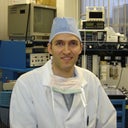Is it advised to do lower blepharoplasty without fat repositioning? Is fat repositioning a part of lower blepharoplasty or are they considered separate procedures?
Answers (20)
From board-certified doctors and trusted medical professionals

Dr. A.J. Amadi, MD
Oculoplastic Surgeon, Board Certified in Ophthalmology
Answer

Dr. Mehryar (Ray) Taban, MD, FACS
Oculoplastic Surgeon, Board Certified in Ophthalmology
Answer

Dr. Afshin Farzadmehr, MD
Dermatologic Surgeon, Board Certified in Dermatology
Answer
More Eyelid Surgery Questions
See all Eyelid Surgery Q&AWE SEND PRETTY
EMAILS
What’s trending? Who’s turning heads? Which TikTok myths need busting? We’ve got you. No fluff, no gatekeeping—just real talk. Get our free, unfiltered newsletter.



